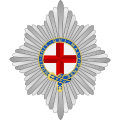This article has multiple issues. Please help improve it or discuss these issues on the talk page . (Learn how and when to remove these messages)
|
A style of office, also called manner of reference, or form of address when someone is spoken to directly, is an official or legally recognized form of reference for a person or other entity (such as a government or company), and may often be used in conjunction with a personal title. [1] [2] A style, by tradition or law, precedes a reference to a person who holds a post or political office and is sometimes used to refer to the office itself. An honorific can also be awarded to an individual in a personal capacity. Such styles are particularly associated with monarchies, where they may be used by a wife of an office holder or of a prince of the blood, for the duration of their marriage. They are also almost universally used for presidents in republics and in many countries for members of legislative bodies, higher-ranking judges, and senior constitutional office holders. Leading religious figures also have styles.
Contents
- Examples
- Academia
- Government
- Medicine
- Nautical and aeronautical
- Religious
- In different countries
- Australia
- Belgium
- Brunei
- Canada
- Chile
- Guernsey
- New Zealand
- Jamaica
- India
- African traditional rulers
- Hong Kong
- Ireland
- Malaysia
- Morocco
- Philippines
- Spain
- Thailand
- United Kingdom
- United States
- Former styles
- Other parallel symbols
- Self-styled
- See also
- Notes
- References
- External links
The second-person (singular and plural) possessive adjective your is used as a form of address (that is, when speaking directly to the person[s] entitled to the style[s]); the third-person possessive adjectives his/her' (singular) and their (plural) are used as forms of reference (that is, when speaking about the person[s] entitled to the style[s]).



